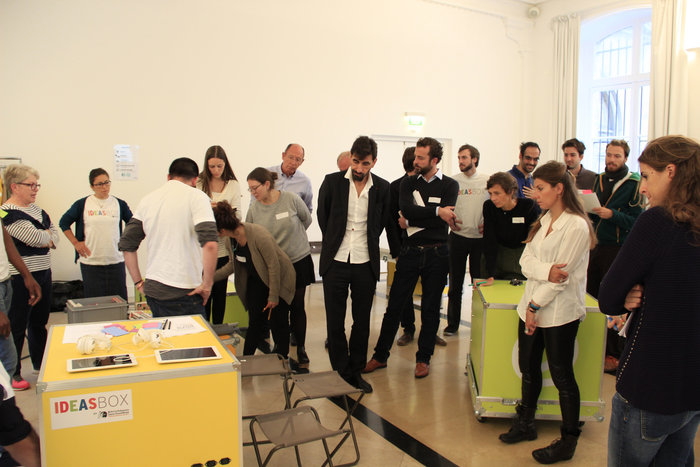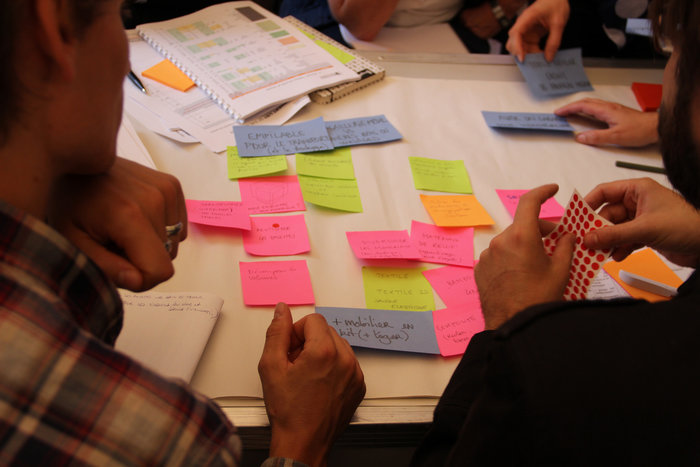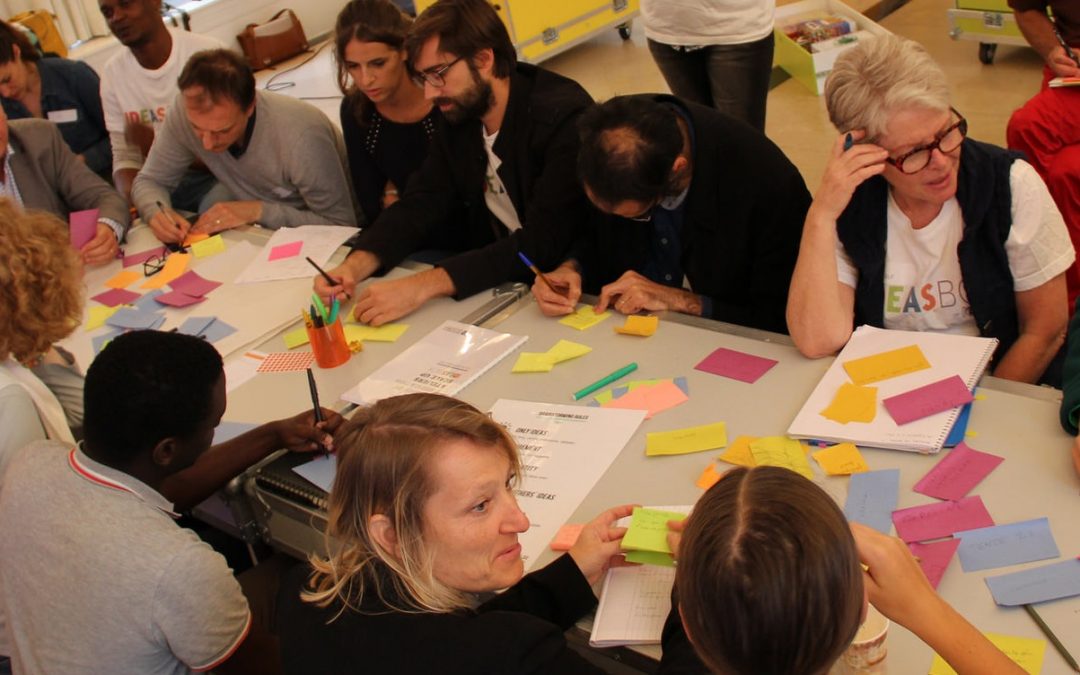We have all seen many ‘kits’ on the market that provide deployable educational resources (be they digital or physical) in humanitarian contexts. For example, UNICEF provided the earlier frontrunner with the School-in-a-Box, which was later iterated upon to create digital formats that include everything from UNICEF’s MobiStation to Vodafone’s Instant Network School Classroom or Samsung’s Solar Powered Internet School. While each of these ‘kits’ has its own unique properties and purposes, many often wrestle with similar design challenges.
These are some of the most pressing tensions all physical ‘kit’ designers struggle with:
- How to reduce the weight of kits for easy deployment while ensuring their durability for transportation and protection against the elements?
- How to retain the integrity of the design and spirit of the concept while effectively minimizing the cost of kit contents?
- How to enable customization and localization while optimizing reproduction processes?
These questions formed the context for the second (of three) “Hack-the-Box” design sessions we hosted in collaboration with Libraries Without Borders (LWB) and MakeSense while engaging in a refinement process of the Ideas Box prototype.

Hacking-the-IdeasBox
Since 2013, LWB has been developing the IdeasBox concept, which emerged from humanitarian field challenges and has evolved into a reverse-innovation tool that is demonstrating impact in all corners of the world.
UNHCR Innovation is proud to collaborate with LWB as they continue to adapt their concept, fusing field-feedback with global thought-leaders and designers to strengthen the utility of the Ideas Box.
The main questions presented by LWB at the second session focused on the physical design, structural use and logistical arrangements of the Ideas Box. These questions emerged from field feedback and echo common challenges raised by many ‘kits’.

Here are some of LWB’s favorite solutions put forward regarding the last tension:
“I like the final idea of rationalizing the three layers of the box. Because today we have, the envelope of the box and then inside several modules and container which are then organized by the library shelves. The idea for having one big envelope, that you can use to just take down one part and reveal the entire module for discovery, I think is a great idea. It will save money, the time to build, and it will save weight.” Jeremy Lachal, LWB Director
“One of my favourite ideas that is immediately useable, and very close to things that we needed is: making compartments through which the different equipment can be separated; but making those compartments mobile so that they can be taken out of the Ideas Box and set up within the space. That way you can adapt the content to adult height, child height, and bring more colour depending on the local culture… And (…) what-if some of these equipments were created locally?” Barbara Schack, Ideas Box Project Manager.
Stay tuned for the full list of innovative refinement ideas tabled at the design session, which will be released by LWF shortly on ideas-box.org
Or, feel free to share your ideas by commenting on this blog or by joining the Ideas Box community!
You can also continue to support the Ideas Box development by voting for the Idea within the finalists of the Google Impact Challenge.
Photo credit: Bibliotheque Sans Frontieres
We’re always looking for great stories, ideas, and opinions on innovations that are led by or create impact for refugees. If you have one to share with us send us an email at [email protected]
If you’d like to repost this article on your website, please see our reposting policy.

